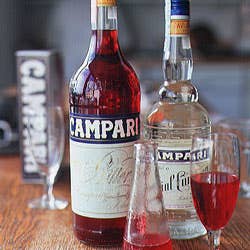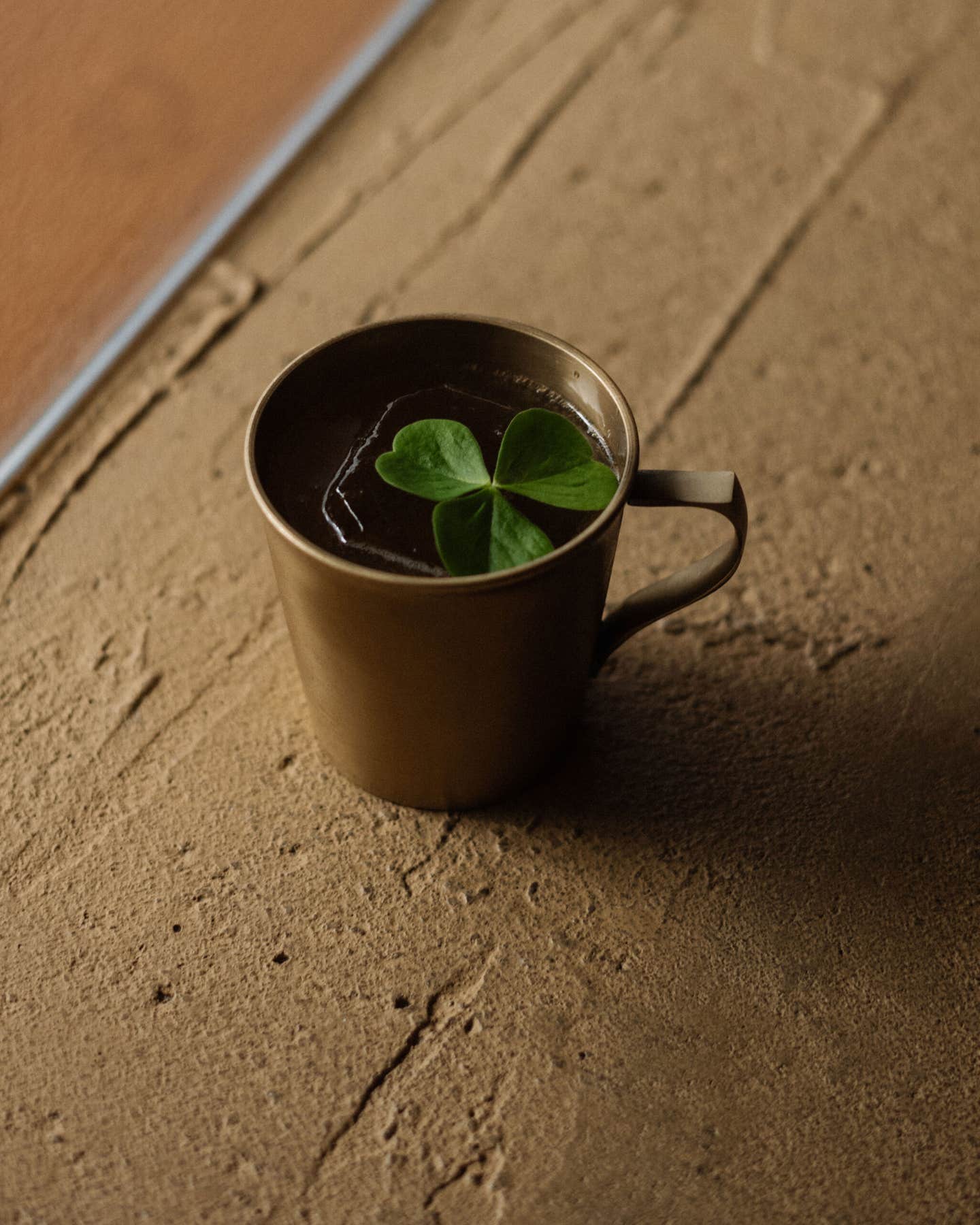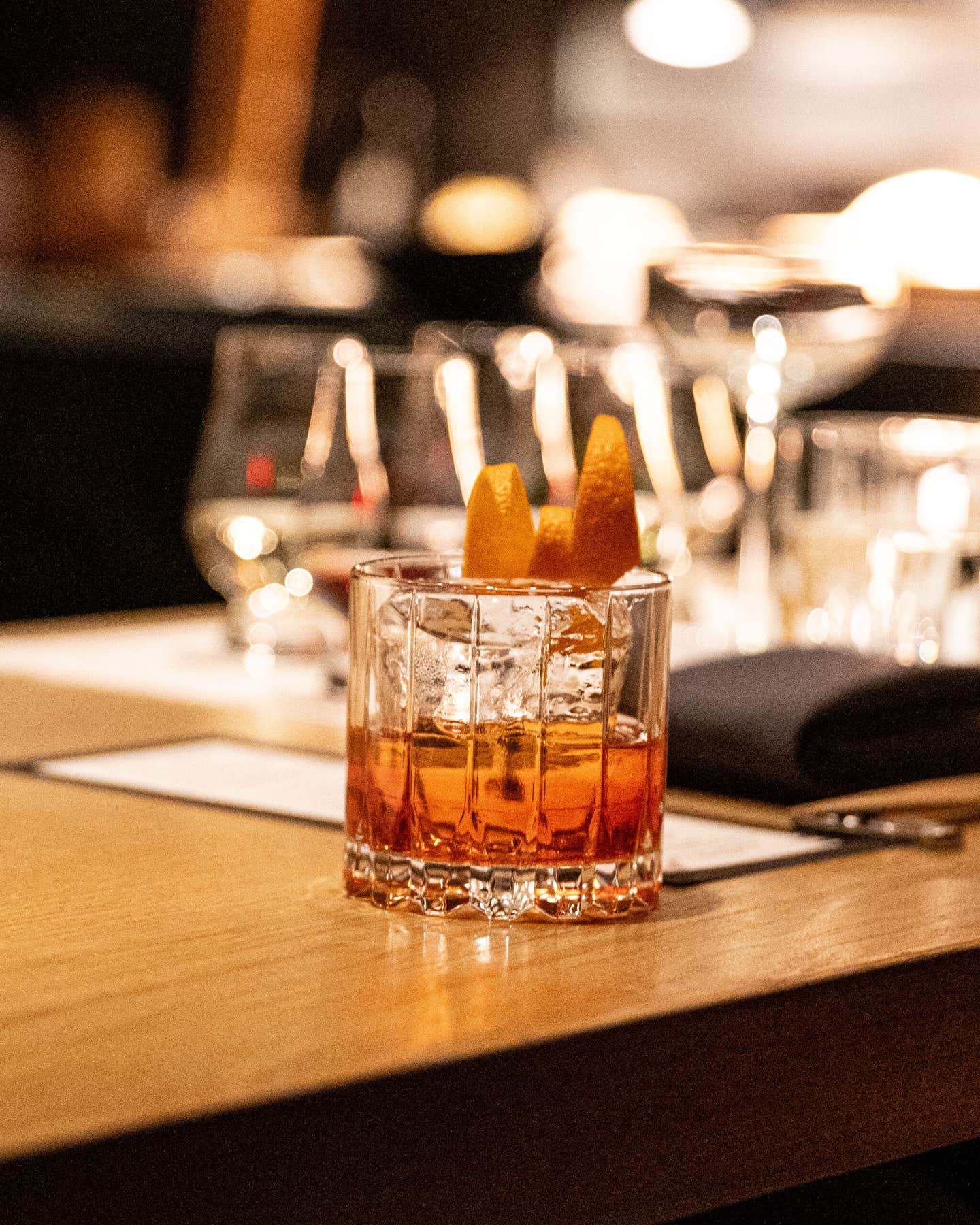
Campari: Good and Bitter
When I got out of college, I used to order Campari on occasion just to let the world know that I'd graduated. Moved East. Even spent a summer in Europe. Sometimes I'd drink it with soda. Sometimes I'd have a negroni—Campari with gin and sweet vermouth—or the same thing without the gin (called an americano, oddly enough).
I still drink Campari, but for a different reason now. I like it. I like the spicy, bitter taste. I like the rosy hue. I'm grateful that Campari, the ultimate acquired taste, has proven to be every bit as sophisticated as I once longed to be. But one question has occurred to me over the years: "What the hell is Campari, anyway?" On a visit to Milan, I found out.
The Campari story begins in the early 1860s, when a bartender-turned-caffe-proprietor named Gaspare Campari started inventing bottled cocktails in the cellar of his new establishment in Milan. He'd mix neutral alcohol with raspberry juice, vanilla, cocoa—whatever struck his fancy—and then sell his homemade libations upstairs. One day, he came up with something he called "Bitter all'Uso d'Holanda"—bitter [meaning a kind of bitter herbal drink] in the style of Holland—based on his notions about legendary Dutch cordials.
The recipe reportedly has not changed since that time: Campari is a blend of equal parts of alcohol, sugar syrup, distilled water, and an infusion flavored with oranges, rhubarb, and—I was told when I visited the main Campari bottling plant in Sesto S. Giovanni, a sterile industrial suburb ten miles north of Milan—ginseng, as well as a mixture of herbs. What herbs? Apparently, only one man in the world knows the answer to that question—the factory director. And he's not telling. So great is the secrecy that some ingredients for Campari are reportedly shipped straight to the director's office in plain brown wrappers. And what if the director is run over by a delivery truck? A company executive concedes to me that there is a method for transmitting the secret recipe. But, she insists, "it is reserved information."
What can be known about Campari is this: Its dry ingredients are soaked in water for two days, mixed with alcohol and more water, and steeped in huge vats for 15 days. The color of the brew at the end of this period is brown, and the taste is bitter—really bitter, as in undrinkable. The liquid is then drained off into blending tanks and the macerated dregs are pressed for more juice, like a tea bag; the soggy remains are boiled to distill more alcohol. Finally, the sweetening syrup and the coloring—from cochineal dye (a commonly used colorant made from the dried bodies of cochineal insects)—are added.
Before bottling, the alcohol level in various batches of Campari is adjusted according to the bitter's final destination—28.5 percent (57 proof) for Eastern Europe, for instance, and 24 percent (48 proof) for the American market. Bottles destined for the U.S. are also labeled "Aperitivo" instead of "Bitter"—since the latter designation would presumably be only slightly more appealing to Americans than, say, "Poison."
In 1994, Sesto S. Giovanni produced 16 million liters—more than 21 million bottles—of Bitter (or Aperitivo) Campari. (Campari is also bottled by subsidiaries in France, Switzerland, and Brazil.) Of this amount, 11 million liters were exported—four million of them to Campari's best foreign customer, Germany (which drinks several times more Campari than the United States). The Italians are still the champion Campari drinkers by far, however, consuming not only Bitter Campari but also Campari Soda—a premixed cocktail of one part Bitter Campari to two parts soda, which is packaged in three-and-a-half-ounce bottles. The plant at Sesto S. Giovanni makes only one other product—Cordial Campari, a liqueur distilled from raspberries but virtually clear in color. It was all the rage in the caffes along the Via Veneto back in the Dolce Vita days of the 1950s and 1960s—but today, sales are small.
Campari Soda was invented by Davide Campari, Gaspare's son and successor, back in 1932. But that innovation was hardly his only accomplishment. In 1900, Davide purchased the Casa Alta, a late 18th-century mansion in what was then the vacation town of Sesto S. Giovanni, and relocated his family to their sumptuous new suburban home. Four years later, he opened a factory next door, moving Campari production from Milan and simultaneously converting it from a hand-run operation to a mechanized one.
In 1920, Davide began exporting Campari for the first time, initially to Switzerland, and then to France. Campari soon developed from a cottage industry into an Italian brand as famous as Fiat or Olivetti—and to this day, the Campari label bears Davide's name, not Gaspare's. After Davide died in 1936, the company was sold to a distant cousin. It eventually drifted out of the family.
Keep Reading
Continue to Next Story










